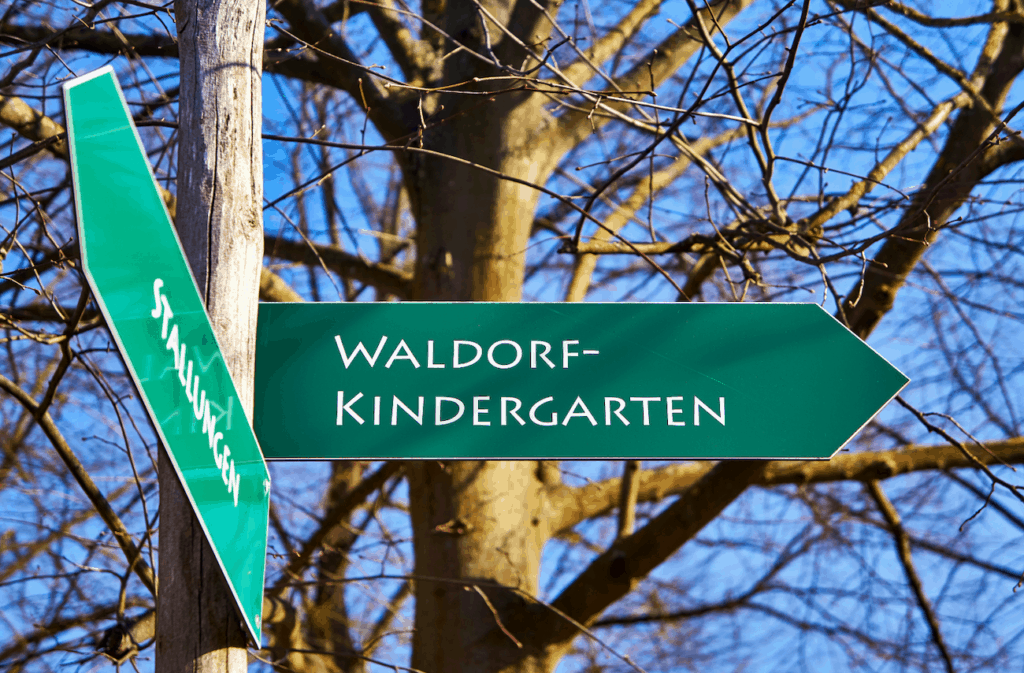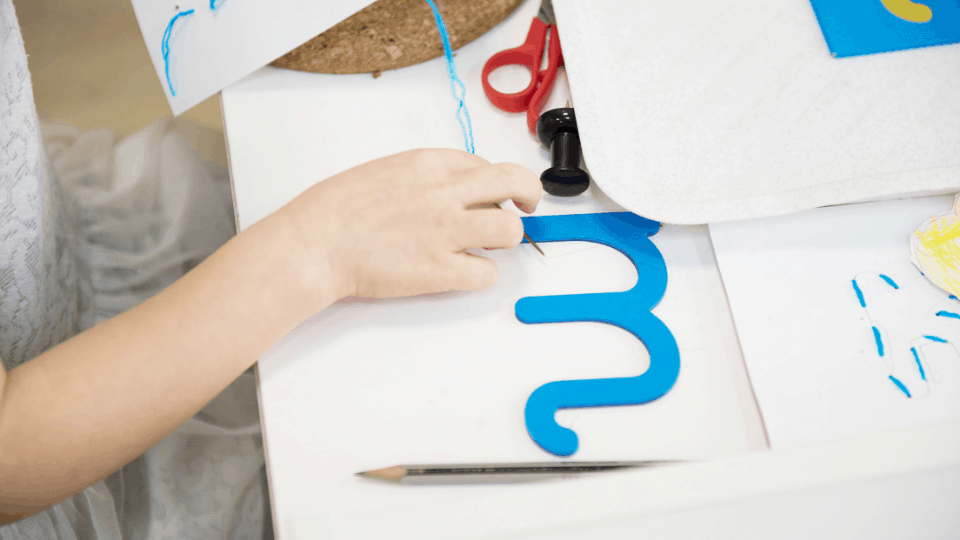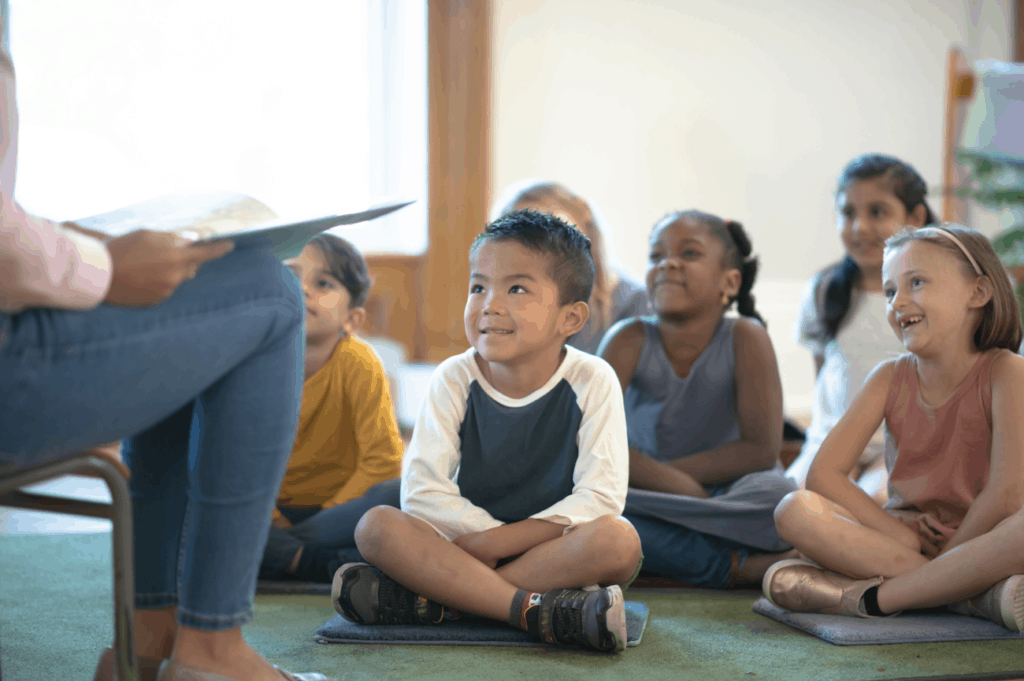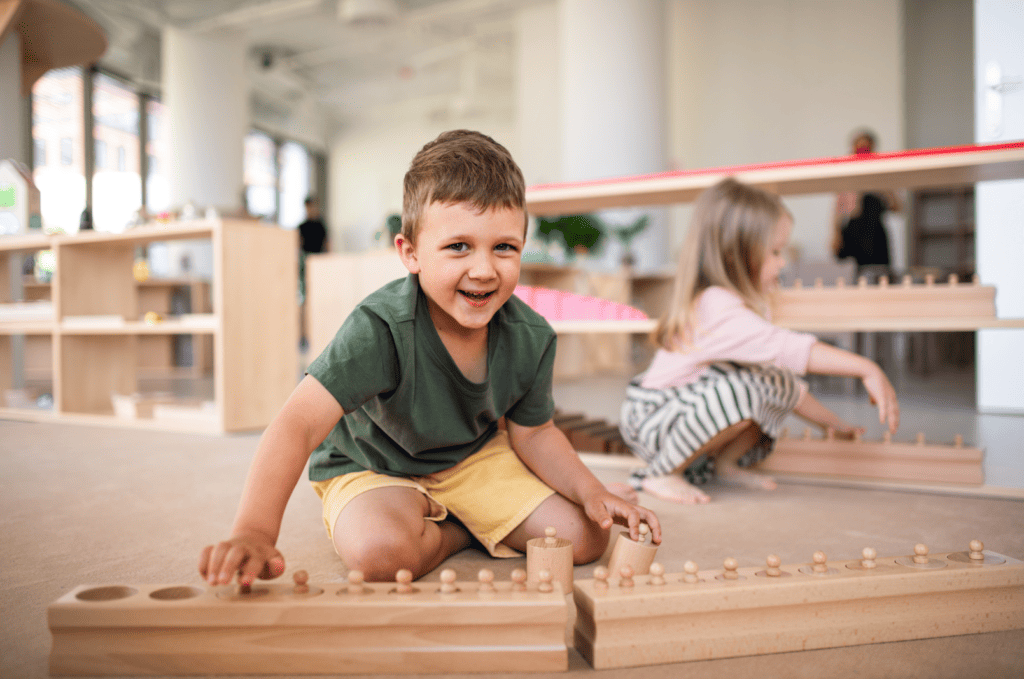Montessori and Waldorf schools are two of the most popular alternatives to traditional public and private schools. They have many similarities, including an emphasis on educating the whole child and respecting each child’s unique needs. However, they are very different in some essential and surprising ways.
The difference between
This is an oversimplification, of course. The differences between these two educational philosophies are a bit more complex. Let’s take a closer look at each philosophy, their similarities and differences, and which one is the better choice for your child and family.

What is Montessori ?
The
Montessori noticed that children who were offered opportunities to engage in practical and hands-on activities like sweeping, sewing, writing, or using manipulates to explore math, eagerly took advantage of that opportunity. She capitalized on this eagerness in her classroom to cultivate a student-led learning environment.
The guiding principle of the Montessori philosophy is that children thrive in an environment where they can complete things independently and learn at their own pace and by their own direction.
What is Waldorf?
The Waldorf educational philosophy was created by German Rudolf Steiner in the 1900s, just like the
Waldorf’s guiding principle is that imagination and creativity are the foundation of all future learning. Fostering a life-long love of learning is one of the most important aims of a Waldorf teacher.

What are the Similarities Between Montessori and Waldorf?
At first glance at these descriptions, you might think that these educational philosophies wouldn’t have much in common, but they do. In fact, they have so many things in common that people who have never experienced either type sometimes confuse one for the other.
Both Montessori and Waldorf Teach the Whole Child
In both philosophies, there is an emphasis on teaching the whole child, which means that they believe in teaching all aspects of the child. Academics are still important, but emphasis is placed on the child’s physical, social, emotional, and cognitive development.
Montessori has its own way of breaking down the areas that should be taught to develop the whole child:
- Practical Life – practical life skills are taught to give children confidence and independence.
- Sensorial Development – Children are encouraged to engage in sensory experiences and practice using their senses.
- Academic subjects – the academic subjects you would expect are also taught to students as they are ready for them.
- Cultural studies – learning about world cultures teaches children to be respectful of diversity and differences.
In Waldorf’s philosophy, educators teach the “hands, hearts, and heads.” Here is what they mean by this:
- Hands—the physical development of the child, main focus in early childhood
- Hearts—the emotional development of the child, main focus in elementary years
- Heads—the intellectual development of the child, main focus in secondary years
Each of these is explored at every age, but as you can see, certain ages focus on a different one. There is no set method of developing these areas that a teacher must follow.
While the terminology may be different, the results are much the same. Teachers in

Waldorf and Montessori Offer Individualized Education Experiences
Teaching the whole child means that both
In
In Waldorf schools, each school and each teacher in that school has a lot of leeway in terms of the subjects they teach and how they teach them. The needs of each class and each student are taken into account.
As children reach higher grades, the level of autonomy is increased, and the subjects they can pursue are varied. For example, in a Waldorf high school, students can choose from a variety of classes like astronomy, American literature, Chemistry, and woodworking. These are usually more focused studies than what you would find in a typical high school.
The classes are still teacher-led, but students usually have more control over the types of classes they take.

Montessori and Waldorf Both Include Practical Craft Activities
When we say crafts, we don’t mean the kind of crafts you see in most elementary classrooms today. We aren’t talking about houses made out of craft sticks or flowers cut from construction paper. You might see these simple art and crafts as well, but what we’re talking about in this section are highly practical crafts where the student leaves a project with a useable item.
Here are some examples of the kinds of crafts you’ll find in both Waldorf and
- Sewing
- Knitting
- Weaving
- Woodworking
You may also see gardening and cooking in both

Montessori and Waldorf Put Importance on Nature and Natural Materials
Both philosophies encourage children to explore and enjoy nature, and both include natural materials in their classroom environment.
In
In Waldorf, students study nature by entering it regularly, but nature is also brought into the classroom as nature tables, decor, and items to study. Natural materials are treasured. You’d be hard-pressed to find a plastic item in a Waldorf classroom that didn’t have a natural equivalent.

Writing is Taught Before Reading
Both
However, the age at which they introduce these skills is vastly different, as you’ll see later in this article.
The Classroom Should Have a Calm Environment
Most teachers prefer a calm classroom, but
In both, the teacher is expected to model appropriate behavior and calmness, but in Waldorf, this is a more active role than in

Modern Technology is Avoided in Montessori and Waldorf Schools
Waldorf and
Most Waldorf schools seem to be a little more strict about this, but it will vary from school to school.
Similarities Between the Founders
Some of these similarities may be rooted in the fact that the founders, Maria
- They founded their philosophies during the Progressive Era.
- They are both European.
- They considered themselves scientists, although
Montessori was a physician, and Steiner had a variety of other interests. - Their founding schools were intended for economically disadvantaged children.
That is where the similarities between these two philosophies end. It is interesting to see how two people doing very similar things can come away with such different takes on the needs of children. Let’s take a look at some of these differences.
What’s the Difference Between Montessori and Waldorf?
Montessori and Waldorf schools are often lumped together because of their similarities, but they are quite different when you take a closer look.
Practical Activities vs. Imaginative Play
This is one of the big ones. The different stance on imaginative play is the biggest difference a parent will note when observing both classrooms, and it is one of the biggest things they have to consider when choosing which school is a good fit for their child and their family.
Montessori schools do not encourage imaginative play, so there aren’t a lot of pretend play items in the classroom. This is because Maria
Let it be clear that this does not mean that Montessori schools are without opportunities to do and make and create. They do have them. And teachers will not stop a child who is engaging in imaginary play (although they may nudge them toward a corresponding real-life activity that they might like). It is just a matter of what is emphasized and encouraged.
Waldorf schools, on the other hand, are all about encouraging imaginative play and the creative arts. Teachers lead students in creating dramas, and toys, like faceless wooden pegs dolls, are meant to spark the imagination. A peg doll could be anything or anyone in a child’s hand.

Student-Led vs. Teacher-Led
The other big difference between these two philosophies is who does the leading in the classroom.
In a true
In Waldorf, the teacher is meant to be at the center of the room, and a calm, gentle guide to student learning. The teacher selects the stories that will be read and the topics that will be covered. Curriculum and activities are chosen with the student’s engagement in mind. Usually, there are more formal lessons in Waldorf curriculums, but it does vary.

When They Start Academic Learning
The philosophies couldn’t be any more different when it comes to this particular topic. They introduce formal academic topics at very different times.
Montessori teachers give students the opportunity to learn academic topics in preschool. In fact, many
Waldorf teachers don’t introduce formal academics until the first grade, around the age of 7. By this time, most students are ready to tackle the learning, and they are eager for it.
Same Age vs. Multiage Grouping
Montessori and Waldorf schools both take a different approach to how they group students than most people are used to.
Montessori groups students in multiage groups that usually look like this:
- Infants: Younger than 3
- Preschoolers: Ages 3-6
- Elementary (lower): Ages 6-9
- Elementary (upper): Ages 9-12
- Secondary (lower): Ages 12-15
- Secondary (upper): Ages 15-18
Often students will stay with the same teacher until they move into the next age bracket, but this isn’t always the case.
On the other hand, Waldorf keeps students in same-age groups from first grade through eighth grade, and they stay with the same teacher. This is because the student-teacher relationship is prized in the Waldorf educational philosophy. Once in high school, classes are taught by experts in their fields.
Uninterrupted Time to Work
One of
Because Waldorf teachers are at the center of the classroom, students don’t get this special, uninterrupted time to pursue their education.
Their Approaches to Spirituality
For the most part, neither Waldorf nor
Waldorf has a different approach. Steiner created anthroposophy, which is a spiritual philosophy. This basically posits that through nurturing the self and other humans, people gain a connection to a spiritual presence.
This isn’t something that Waldorf schools indoctrinate students into. In fact, students of any religion are welcome and respected at Waldorf schools. More or less, it is a guiding principle of education and the reason Steiner thought education was so important.

Which is Better for Your Child: Montessori or Waldorf?
Deciding which type of school to send your child to is an important and sometimes stressful decision.
While you have to take your child and your own personal feelings into account, we offer these guidelines to you as a way to help you make your decision.
Choose
- Shows an early interest in academic subjects
- Likes doing “grown-up” things around the house
- Has an independent, self-starter personality
- Is a little headstrong or likes making choices
- Is mature for their age or ahead academically as they will benefit from the multiage cohort
Choose Waldorf if your child:
- Enjoys imaginative play and art
- Likes to be supported through activities
- Shows less interest in academic subjects
- Would benefit from the longer student-teacher relationship
Even if your student likes to be supported through activities or has no interest in academic subjects, that doesn’t necessarily mean a
So, make sure you filter these recommendations through what you know about your child. At the end of the day, you’re the best person to make this decision.
Which is Better for a Child with Special Needs?
If your child has special needs, it is important to consider those as well. Both
Because students have an open classroom and a wide variety of seating options and a student’s education is self-paced without stigma,
Both
See also our comparison of Montessori school versus Reggio Emilia. For more information on what the







